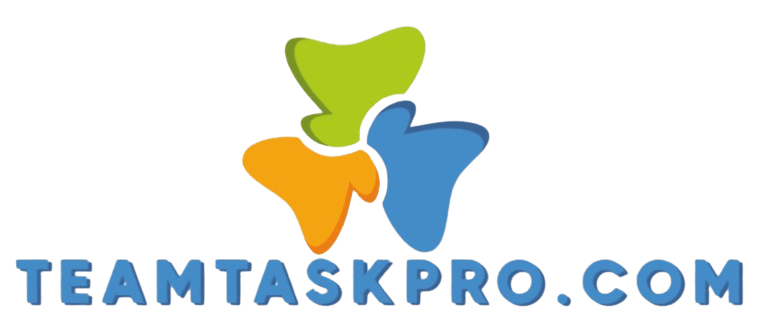the role of stakeholders in project reporting
In the realm of project management, mastering effective reporting is essential for achieving success. Understanding project reporting involves grasping its definition, significance, and identifying key stakeholders involved.
These stakeholders play a pivotal role, influencing the project while bearing responsibilities that can significantly impact outcomes.
By prioritizing effective communication and adhering to best practices, you can foster improved collaboration and navigate challenges that frequently arise.
Get ready! This article dives into key aspects of project reporting that can elevate your management game!
Contents
- Key Takeaways:
- Understanding Project Reporting
- Stakeholders in Project Reporting
- The Role of Stakeholders in Project Reporting
- Effective Communication with Stakeholders
- Challenges and Solutions for Stakeholder Involvement
- Frequently Asked Questions
- What is the role of stakeholders in project reporting?
- Who are stakeholders in project reporting?
- How do stakeholders contribute to project reporting?
- Why is involving stakeholders important in project reporting?
- How can project managers effectively engage stakeholders?
- What challenges might arise when involving stakeholders?
Key Takeaways:

Stakeholders provide valuable insights, monitor progress, and facilitate decision-making in project reporting. Effective communication with stakeholders is essential for success. Clear and concise reporting, active listening, and promptly addressing challenges improve collaboration. Identifying key stakeholders and understanding their responsibilities is vital for project success. Proactive engagement, regular updates, and transparent reporting can help overcome challenges and enhance stakeholder involvement.
Understanding Project Reporting
Grasping the nuances of project reporting is essential for you as a project manager or stakeholder. It acts as a vital communication channel, relaying critical information about project objectives, progress, and outcomes.
This process is not merely a formality; it is integral to your overall project management strategy. It ensures that everyone involved from project sponsors to team members is on the same page regarding project goals and fully aware of any challenges that may surface throughout the project lifecycle.
Definition and Importance
Project reporting involves the organized gathering, analysis, and presentation of data related to your project’s progress and outcomes. This process is essential for knowledge-based decision-making among stakeholders.
With this structured approach, you can effectively monitor performance against established objectives while allowing sponsors and other stakeholders to understand the project’s status in real time.
Promoting transparent and accurate communication makes project reporting a vital tool in identifying potential risks and areas for improvement. It fosters a collaborative environment where proactive adjustments can be made.
Well-crafted reports hold teams accountable and strengthen alignment with strategic goals, contributing to the initiative’s overall success in delivering value and meeting stakeholder expectations.
Stakeholders in Project Reporting
Stakeholders are essential to project reporting, encompassing a diverse array of individuals and organizations. This group includes project sponsors, project managers, team members, and external customers all of whom influence and are influenced by project outcomes.
Their engagement and perspectives shape the direction and success of any initiative.
Identifying Key Players

Identifying the key players in project reporting is crucial for effective stakeholder engagement. This involves recognizing the roles of various stakeholders, such as project managers, team members, and decision-makers.
To navigate the project landscape successfully, consider the distinct functions and contributions of each individual within the team. Stakeholders like clients and investors wield significant influence over project outcomes, while team members offer the technical expertise essential for implementation.
Grasping the dynamics between these participants reveals how their collaboration drives progress toward project objectives. Regular communication and feedback loops nurture relationships, ensuring everyone understands their responsibilities and aligns with overarching goals.
By mapping out this ecosystem, you can more easily engage stakeholders and harness their unique insights to propel your project toward success.
In conclusion, understanding the importance of project reporting and stakeholder engagement is crucial for any project manager. Apply these insights to enhance your reporting strategies and foster collaboration among your team and stakeholders. Share your experiences and challenges in project reporting to continue the conversation!
The Role of Stakeholders in Project Reporting
The role of stakeholders in project reporting is many-sided, covering several important responsibilities that are vital for achieving project goals, including understanding stakeholder expectations in reporting.
Their involvement is not just beneficial; it is critical for ensuring project success.
Responsibilities and Contributions
Stakeholders carry diverse responsibilities in project reporting, including providing essential resources and using reporting to manage project risks to help everyone talk to each other.
Each stakeholder plays a pivotal role in the process be it the project manager guiding the overall vision, suppliers ensuring timely deliveries, or team members executing tasks with diligence.
Your participation not only streamlines workflows but also nurtures a culture of collaboration. Regular interactions help you tackle roadblocks head-on!
This synergy reinforces accountability and fosters trust, ultimately propelling the project toward successful completion.
Effective Communication with Stakeholders
Effective communication with stakeholders is essential in project reporting. It ensures that all relevant parties remain informed, engaged, and aligned with the project’s direction and goals.
By fostering clear dialogue, you cultivate a collaborative atmosphere that enhances understanding and commitment throughout the project lifecycle.
Best Practices for Reporting

Implementing best practices for reporting significantly enhances the quality and effectiveness of your communication with stakeholders, ultimately leading to improved collaboration and project outcomes.
By prioritizing clear and concise updates, you can ensure that everyone is on the same page, minimizing misunderstandings and fostering a shared vision.
Using visual tools like dashboards makes complex information easier to understand for everyone. Regularly scheduled check-ins and feedback loops keep all parties informed and encourage active participation in the project s progress.
Emphasizing transparency and fostering an open dialogue allows stakeholders to voice their concerns, ensuring their insights are integrated into the project s evolution. This approach enhances overall engagement and drives success.
Challenges and Solutions for Stakeholder Involvement
Challenges in stakeholder involvement can profoundly influence project outcomes. By identifying these obstacles, you enable yourself to implement effective solutions that promote engagement and collaboration.
Addressing Obstacles and Improving Collaboration
Addressing obstacles to stakeholder involvement is essential for boosting cooperative efforts. Many challenges can hinder engagement, including communication barriers, conflicting interests, and varying levels of commitment among stakeholders.
Often, stakeholders may have limited availability due to time constraints, leading to delayed feedback and hindering timely decision-making.
To overcome these hurdles, consider implementing structured communication channels that foster transparency and promote regular updates.
Creating inclusive forums for dialogue allows you to address concerns effectively, while tailored engagement strategies like personalized outreach and workshops can help you build deeper connections.
Acknowledging and aligning stakeholder objectives through collaborative goal-setting can pave the way for more effective partnerships.
Frequently Asked Questions
What is the role of stakeholders in project reporting?

Stakeholders play a crucial role in project reporting by providing valuable inputs, identifying risks and issues, and ensuring the project’s success. To better understand their importance, you can explore what are stakeholders in project management?
Who are stakeholders in project reporting?
Stakeholders include project managers, team members, clients, sponsors, and investors. Anyone with a vested interest in the project is considered a stakeholder.
How do stakeholders contribute to project reporting?
Stakeholders provide key data and review reports. They also join project status meetings to discuss progress.
Why is involving stakeholders important in project reporting?
Involving stakeholders promotes transparency and accountability. It helps identify and solve potential issues early.
How can project managers effectively engage stakeholders?
Project managers should clearly define roles and set expectations. Regular updates and progress reports keep everyone informed.
What challenges might arise when involving stakeholders?
Challenges include conflicting interests and priorities. Availability and alignment of expectations can also pose difficulties.





